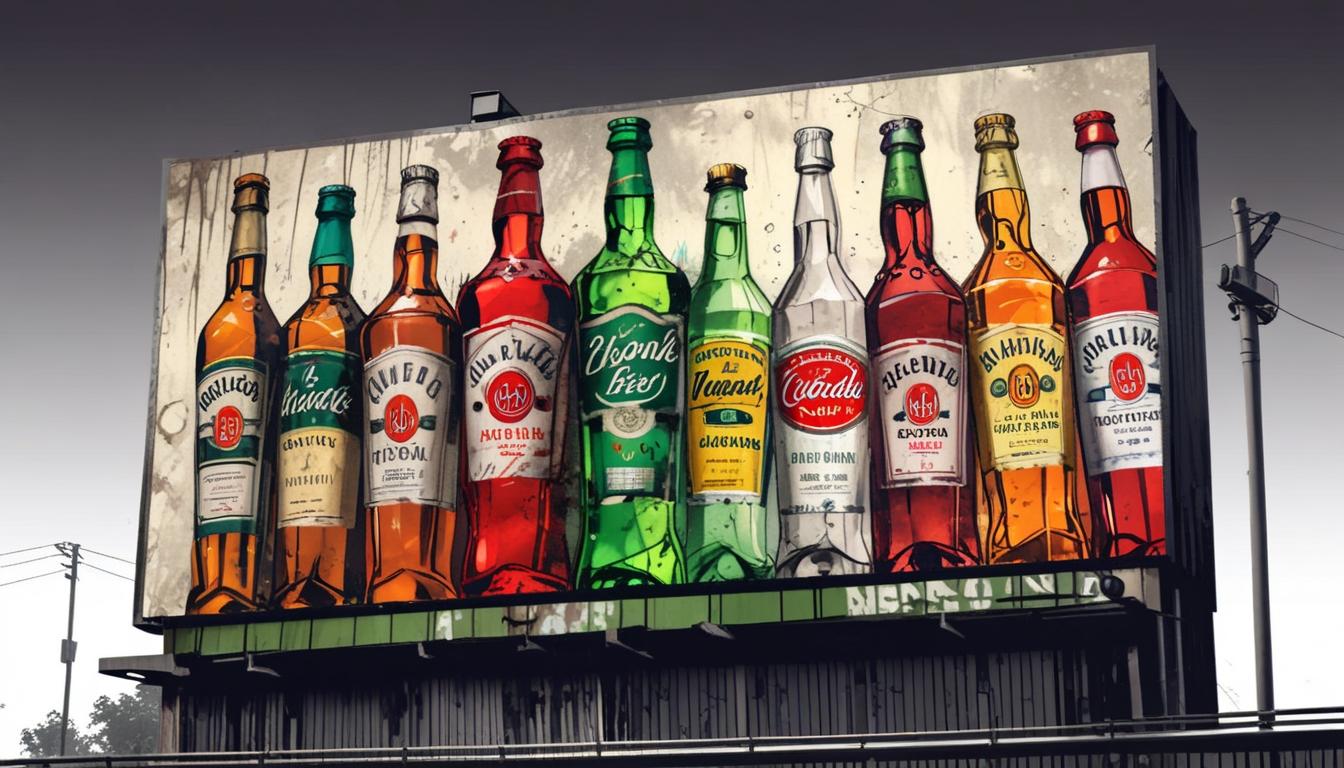Andrew Tindall, a marketing expert with extensive experience in the drinks industry, has shared a critical assessment of the current state of marketing within the global alcoholic beverages sector. Writing for The Drum, Tindall reflects on his seven years working in commercial and marketing roles at companies including Bacardi, Innocent, Brown-Forman, and Diageo, and his subsequent shift to a role focused on global marketing effectiveness.
Tindall argues that the drinks industry’s marketing has lost direction, describing a pervasive culture among what he terms "drink-marketing-wankers" (DMWs) – marketing professionals deeply entrenched in the alcoholic drinks world to the point of losing objectivity. According to Tindall, these individuals are often caught in a cycle of internal industry banter, trend-chasing such as launching new hard seltzers or gins that seem culturally significant only within their circles, and excessive focus on industry gossip rather than consumer needs.
He highlights concerning trends among major spirit brands, including a prevalence of “left-brained” advertising – campaigns that rely heavily on rational product features rather than engaging broader audiences with “right-brained” creative elements that evoke emotion and cultural relevance. Tindall references research by Orlando Wood and colleague Nick Williamson’s guide, Raising The Bar, to illustrate how most big spirits ads fail to recruit lighter, newer buyers because of their formulaic, uninspired style.
The article also points to a uniformity across big-booze advertising efforts, noting similarities in music, studio use, and casting choices that result in a lack of distinctiveness between brands belonging to the same large companies. He questions the influence of procurement teams and agency choices in perpetuating these trends, suggesting that innovation has been reduced to minor adjustments such as slight flavour tweaks and changes in bottle design, rather than delivering genuinely distinctive products. Furthermore, he highlights the ongoing prevalence of heavy discounting in grocery retail as a major challenge for the sector, with many spirit brands frequently sold at reduced prices, undermining brand value.
On the wider industry context, Tindall observes a significant decline in the share prices of major alcoholic beverage companies, some falling by more than 30%, and one down by 79%, reflecting market concerns about future growth. Industry observers typically fall into four camps about the causes of these declines: veterans citing macroeconomic factors; those sceptical about marketing's effectiveness; vocal critics pointing to cultural shifts away from alcohol; and a minority who acknowledge marketing’s key role in maintaining brand strength and category growth.
Despite these challenges, Tindall identifies positive examples offering hope within the industry. He praises the consistent and culturally resonant marketing of brands such as Guinness with its recent campaigns, Bacardi Rum’s ‘Do What Moves You’ platform, and White Claw’s pioneering role in establishing the hard seltzer category globally. He also highlights smaller brands using innovative branding and advertising strategies with notable success, such as The Woodsman whisky’s use of the character Barry the Beaver, Poretti’s revitalised campaigns, and De Kuyper’s refresh of Archer’s Peach Schnapps featuring celebrity involvement.
Tindall points to Malibu’s recent advertising featuring Brian Cox as an example of "right-brained" creativity, distinguishing itself through authentic celebrity collaboration and fresh creativity in an otherwise formulaic category. Another standout he discusses is AU vodka from Swansea, identified as one of the fastest growing global brands due to its market-driven approach, distinct packaging, and unconventional marketing channels, despite lacking traditional television advertising.
Of particular note is Tindall’s commendation of Heineken’s Birra Moretti brand in the UK. He describes it as a “champion of a brand” that outsells rivals like Peroni by a ratio of 10 to 1 in grocery stores and is the top draft beer in the country. Birra Moretti’s recent campaigns have scored highly in effectiveness testing, and despite some volume loss, the brand managed to increase its price by 11% while growing revenue – a rare achievement in the drinks sector. He points to its new Birra Moretti Sale Di Mare innovation as an example of successful, balanced product development.
Summarising his views, Andrew Tindall expresses concern that marketing in the big-booze sector has underperformed, contributing to falling brand equity and company valuations. Yet, he emphasises the work of marketers and brands who have adopted a more evidence-based, creative, and culturally nuanced approach, suggesting that these efforts represent green shoots of revival for an industry that remains significant in global commerce.
Andrew Tindall currently serves as Senior Vice President of Global Partnerships for System1, a creative effectiveness platform. His background combines marketing science and practice, enabling him to analyse advertising with both creativity and empirical insight. His commentary offers an informed perspective on how the drinks marketing industry can evolve amid changing market dynamics and consumer behaviour.
Source: Noah Wire Services
